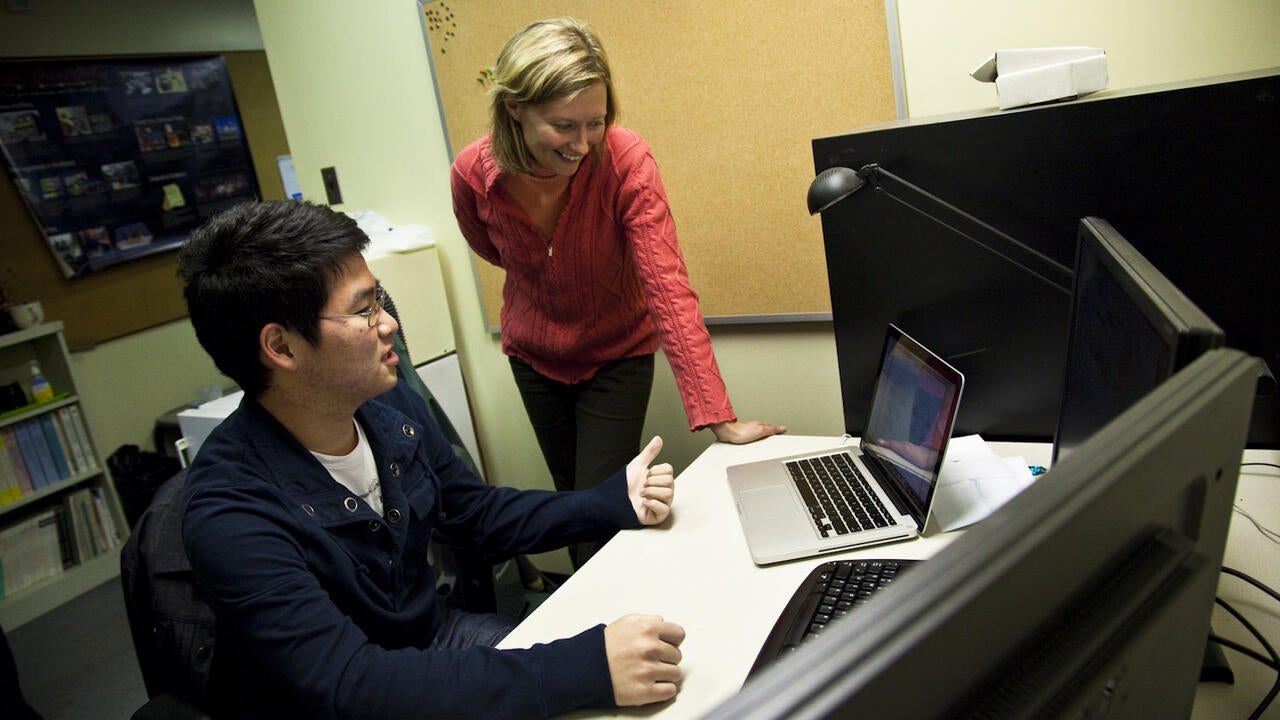
Making information more meaningful at Advanced Interface Design Lab
Catherine Burns returned to the University of Waterloo to become the Director of the Advanced Interface Lab

Catherine Burns returned to the University of Waterloo to become the Director of the Advanced Interface Lab
By Julie Stauffer Faculty of EngineeringWe’ve all been there: paralyzed by too much information, too poorly organized.
It’s frustrating enough when you’re just trying to choose the right cellphone plan. The stakes soar, of course, if you’re operating a nuclear power plant, caring for cardiac patients or making a million-million-dollar trade on the TSX.
That’s where Catherine Burns comes in.
As director of the Advanced Interface Design Lab at the University of Waterloo, her mission is to help people extract more meaning, more easily, from the information all around them.
Burns first came to Waterloo as an undergraduate student, enticed by the uniqueness and flexibility of the Systems Design Engineering program. In 1998, she returned as a faculty member, this time attracted by the calibre of students she teaches as a professor.
 “One of the joys of being in (the) department is to be working with these really creative, flexible, bright thinkers,” she says.
“One of the joys of being in (the) department is to be working with these really creative, flexible, bright thinkers,” she says.
You’ll usually find half a dozen of those students in her lab, all of them driven by a fundamental curiosity about how people work and a passion for helping them perform better. Next door, four customizable rooms serve as the team’s experimental space — one day acting as a stock market workstation, the next as a car simulator.
The lab has drawn an eclectic mix of researchers over the years, from computing and industrial engineers to psychology majors. The research problems they tackle have been equally diverse.
“It’s a really interesting kind of cross-cutting field,” Burns says. “Everyone at Waterloo recognizes that a lot of innovation happens when you cross boundaries.”
One of their earliest projects was improving safety at nuclear power plants by creating easier-to-interpret monitoring systems. Since then, her team has extended that success to a slew of other fields.
In pediatric intensive care units, they’ve developed a mobile system to consolidate patient data from different monitoring devices. They’ve also created user-friendly tools to help cardiac nurses perform triage, redesigned home-based monitoring devices to motivate seniors to check their blood pressure more regularly and improved medication labels to reduce human error.
In the world of high finance, Burns and her team are giving traders an edge by redesigning automated trading software to help them interpret the deluge of minute-by-minute market information and make smart snap decisions.
Meanwhile, one of the lab’s latest projects focuses on a conundrum inherent in self-driving cars. As sophisticated sensors and algorithms allow drivers to kick back, how do you keep them ready to seize the controls in a crisis?
As technology advances, Burns sees plenty more challenges to keep her lab busy — along with plenty of opportunities to make a difference.
“I think it’s really quite unlimited, the impact that’s possible,” she says.

Read more
Here are the people and events behind some of this year’s most compelling Waterloo stories

Engineering master's student Nayeema Nonta (left), one of the three paper authors, and her supervisor, Dr. Sirisha Rambhatla, in a large server room with the computer power needed to develop their new LLM training technique. (University of Waterloo)
Read more
Waterloo researchers develop highly efficient AI training system that paves the way for cheaper, greener “intelligent partners”

Read more
Engineering researchers team up to tackle the plastics pollution problem with microbial innovation and engineering design
The University of Waterloo acknowledges that much of our work takes place on the traditional territory of the Neutral, Anishinaabeg, and Haudenosaunee peoples. Our main campus is situated on the Haldimand Tract, the land granted to the Six Nations that includes six miles on each side of the Grand River. Our active work toward reconciliation takes place across our campuses through research, learning, teaching, and community building, and is co-ordinated within the Office of Indigenous Relations.